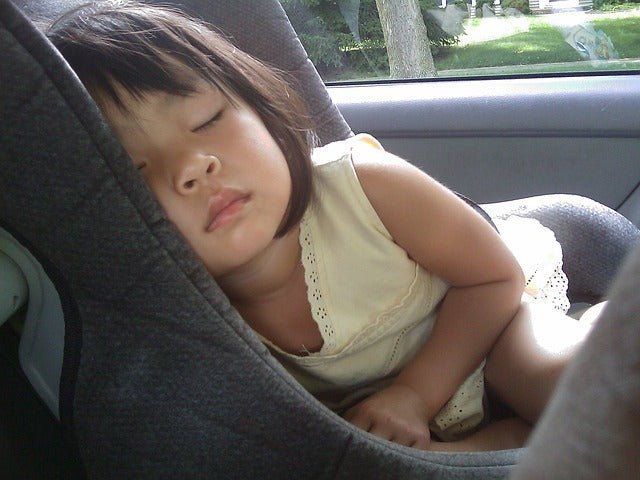Some car seats can be connected to a pram chassis in order that you can easily transfer your little one from the back of the car and head out for a stroll. However, it can be tricky to find the right car seat to fit onto a pram since there isn't a universal sizing or fastening system used by all brands or manufacturers.
A popular pram that can have a car seat attached is the Orb from Mothercare, but what car seat fits Mothercare Orb? In this blog we'll help you to find a compatible car seat for the Orb and share some handy buying tips for car seats.
What car seat fits Mothercare Orb?
It can be tricky to figure out what car seat fits Mothercare Orb pushchairs because the Orb is no longer being manufactured and sold as new. However, many people have used Orb pushchairs and are keen to find compatible car seats to use with it.
The Mothercare Orb is compatible with a few different car seats from brands other than Mothercare. Maxi-Cosi Cabriofix and Pebble infant car seats work with the Orb pram when you use a Maxi-Cosi car seat adaptor. The Cybex Q Cloud car seat can work with the Mothercare Orb but, again, a suitable adaptor is needed. Joie Gemm, i-Gemm and i-Level car seats are also compatible with the Mothercare Orb pushchair.
Why don't all car seats fit all prams?
There is no universal sizing systems used to manufacture pushchairs and car seats. Every brand, and even every model from every brand, has unique dimensions. This means that you can't assume any car seat will fit your pram.
It's usually wise to buy a car seat from the same brand or manufacturer as your pram as these are most likely to fit. It's particularly helpful to buy a car seat and pram at the same time or in a bundle to ensure compatibility. If in doubt, contact the manufacturer of a car seat to check that is it compatible with your pushchair.
What are the benefits of using a car seat that attaches to a pushchair?
If you'll be regularly hopping in and out of the car with your little one a car seat that attaches to your pram can be really handy. Rather than having to lift baby out of the car seat and into the pram, you simply remove the entire car seat and attach it to the pram chassis. You don't have to fiddle with clips or remove any blankets that are keeping baby warm. Plus, if baby's asleep there's less risk of waking them if you don't have to lift them out of their cosy seat.
What features should I look for when choosing a car seat?
Aside from compatibility with your pram if you want it, there are lots of important factors to consider when shopping for a new car seat. First is safety. All car seats used in the UK must conform to the United Nations ECE regulation R44 standard, or the i-size regulation R129 standard. There should be an 'E' label on the car seat which is proof that it meets appropriate regulations.
Isofix is another important safety feature to consider. Isofix seats attach to anchor points in the car to prevent the seat from shifting in the event of an accident. They can minimise the risk of serious injury if your vehicle is involved in an accident. Although not essential by law, Isofix seats are proven to be far safer than car seats that attach via seat belts. Most cars on the road in the UK already have Isofix anchor points so there's usually no barrier in choosing an Isofix seat.
With safety features considered, you want to think about convenience. Some car seats have removable, washable covers to help you keep them clean which is ideal in the event of spills, spit-ups and nappy leaks. You should also consider whether a car seat is convenient to carry around if you'll regularly be taking it out of the car. Some seats are big and heavy, and best suited to being left in the car most of the time. If you want a seat you'll be able to easily move baby around in then you should look for one that is compact and lightweight.
What size car seat do I need?
It's vital that you select a seat that is suitable for your baby's age and height. Baby car seats (group 0+) are rear-facing and designed for newborns and suitable for the first 12 months or so. When baby gets to around 9 months, keep checking where their head lies on the seat; if it reaches the highest point of the seat it's time to transition to a larger seat.
Toddler car seats (group 2) are front-facing and suitable for kids between 9 months and 4 years old. When the child's ears reach the highest point on the headrest of the seat, it's time to transition to a high back booster seat. Booster seats (group 3) are usually used for the longest amount of time. They must be used until the child reaches 12 years of age or 135cm (4 feet 4 inches), whichever comes first.
You can also find car seats that span the age ranges listed above. They have adjustable headrests and leg rests in order to accommodate your little one as they grow. Plus, they can be used rear-facing for the first months of baby's life and front-facing once baby is big enough. They're a great investment if you're looking for a car seat that will last for as long as possible.
Shop for car seats at For Your Little One
We have a wide range of car seats available from leading brands such as Doona, Kinderkraft, Hauck and Venicci. Shop the full collection now to find your little one's next car seat.







